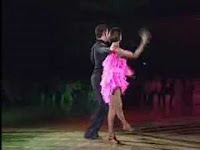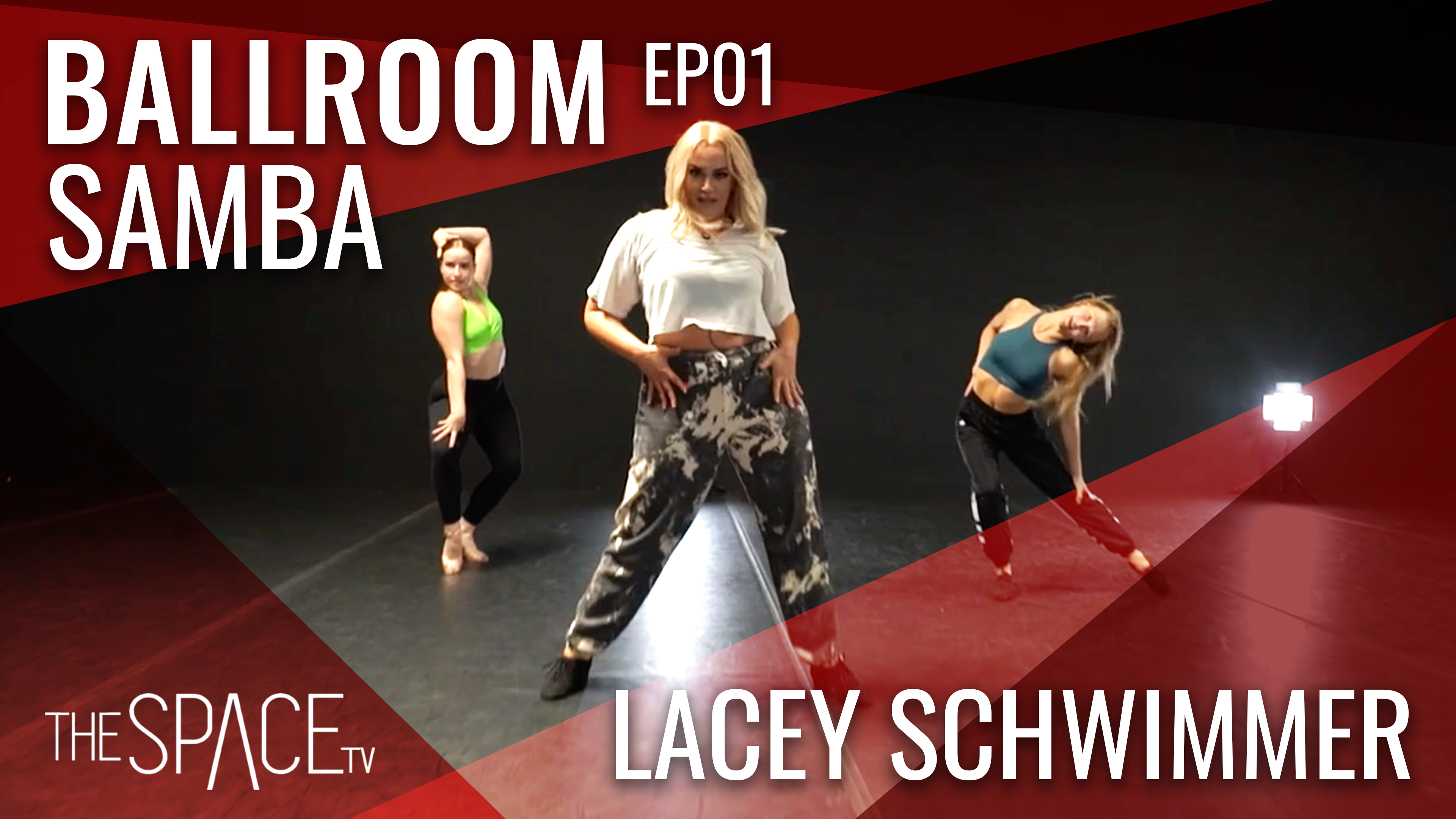


The only difference is that on the second step, the leader steps slightly to the right (the follower to the left) and on the third step the leader brings the left foot to the right foot, while the follower brings the right foot to the left foot. The Box Basic is similar to the Basic described above. The basic is completed by the leader doing the back steps just completed by the follower and the follower doing the forward steps just completed by the leader. Samba music is "cut" or syncopated (a dancing term rather than a music term) which means that a soft 'a' beat is added close to the 2 beat, thereby cutting the beat which would otherwise be counted as 1,2. the 'a' and '2' steps are danced on the balls of the feet for the leader. The follower steps back with the right foot, then brings the left foot to the right foot and finally replaces weight on the right foot. If the leader steps forward with the left foot, the next step is to bring the right foot to the left foot and the third step is to replace weight on the left foot. To start the basic step the leader can step forward or back with either foot.

Clink on the link to go to our page on Forro. Ballroom Samba dancers will be able to recognize some Forro steps. It is difficult to dance this dance to the Samba music the West has come to recognize.įorro is a partner dance from Brazil. Samba Gafieira is also called the Brazilian Tango. For further information, follow the link to our page on Samba Gafieira. Samba Gafieira (dancehall or club Samba), is a partner dance from Brazil. When social Samba is danced in small spaces, the travelling steps are omitted, the steps are smaller, the style is relaxed, and the Samba is danced as a spot dance. Social Samba is a partner dance that is part of the Latin dances in social North American style dancing. Ballroom Samba can travel around the room. To avoid the use of confusing terminology, we will use the following terms:Ĭarnival (Carnival) Samba is a solo dance that can be seen danced in the carnival at Rio de Janeiro.īallroom Samba is a partner dance that is part of the Latin dances in international style ballroom dancing. For ballroom dancers, Samba is a partner dance that many Brazilians will not recognize as a dance with Brazilian roots. To a Brazilian, Samba the dance, is a solo dance danced by Carnaval (Carnival) dancers. music and dance find their home in Brazil.The lady's left hand is placed flat on the man's back.īasic step is a very simple box step. The man's right hand is placed on the lady's shoulder blade. The lady's right hand and the man's left hand are held about the lady's eye level. See the video below for detailed explanation.īallroom samba is danced in a closed position, with partners slightly apart. The most characteristic element of samba is probably the so called samba bounce, which is achieved through rhythmic bending and straightening of the knees. Usually you count 8 beats before resuming the count. The basic rhythm is 1 & 2, 3 & 4, 5 & 6, 7 & 8, commonly described as "one, uh two", "three, uh four", and so on. This means that three steps are performed in two beats of music. The basic box step consist of three steps. Here we'll focus on the ballroom version, quite popular in North America and Europe, with both the younger and older generations.īallroom samba is usually danced to music written in 2/4 time, meaning there are two beats in each measure. Many versions of samba exist - Carnivale, Mesemba, Carioca, Batucado, Conga, just to name a few. Today it's one of the most common Latin American dances. Ballroom samba, on the other hand, is a partner dance that has little in common with the original form.Īlthough in Brazil samba remains a solo form, in other countries it evolved into a partner dance and was standardized as a ballroom dance in 1956. In Brazil, it is a solo dance, performed at street festivals and carnivals. Samba is the national dance of Brazil, some say the spirit and soul of the country. It's a popular party dance, characterized by simple forward and backward steps and rhythmic hip movements. Samba is a lively dance of Brazilian origin.


 0 kommentar(er)
0 kommentar(er)
